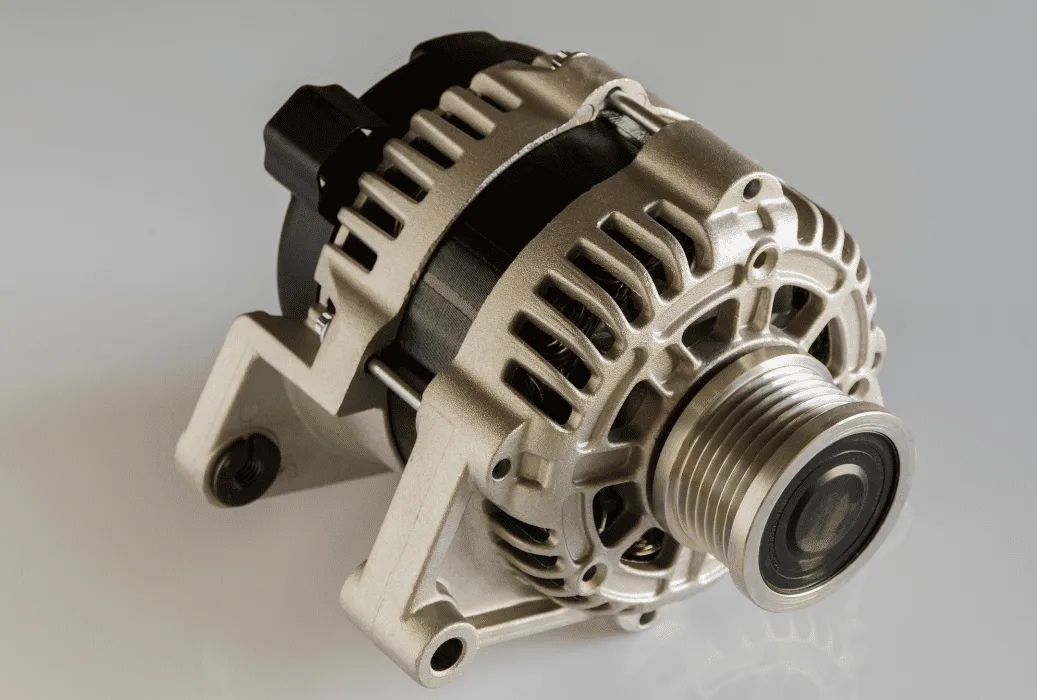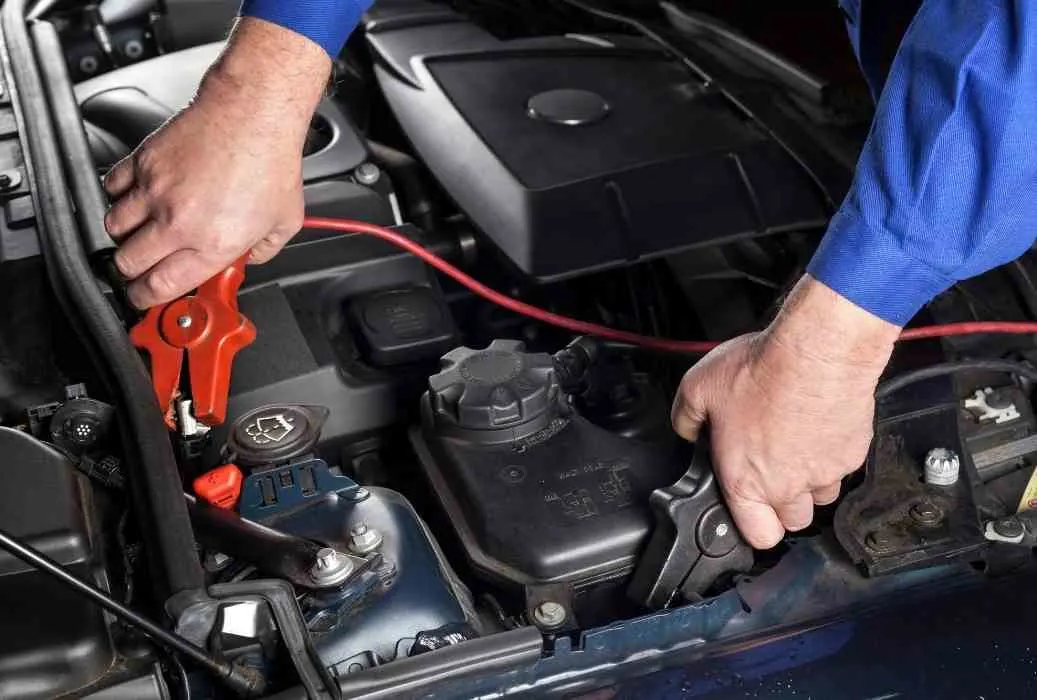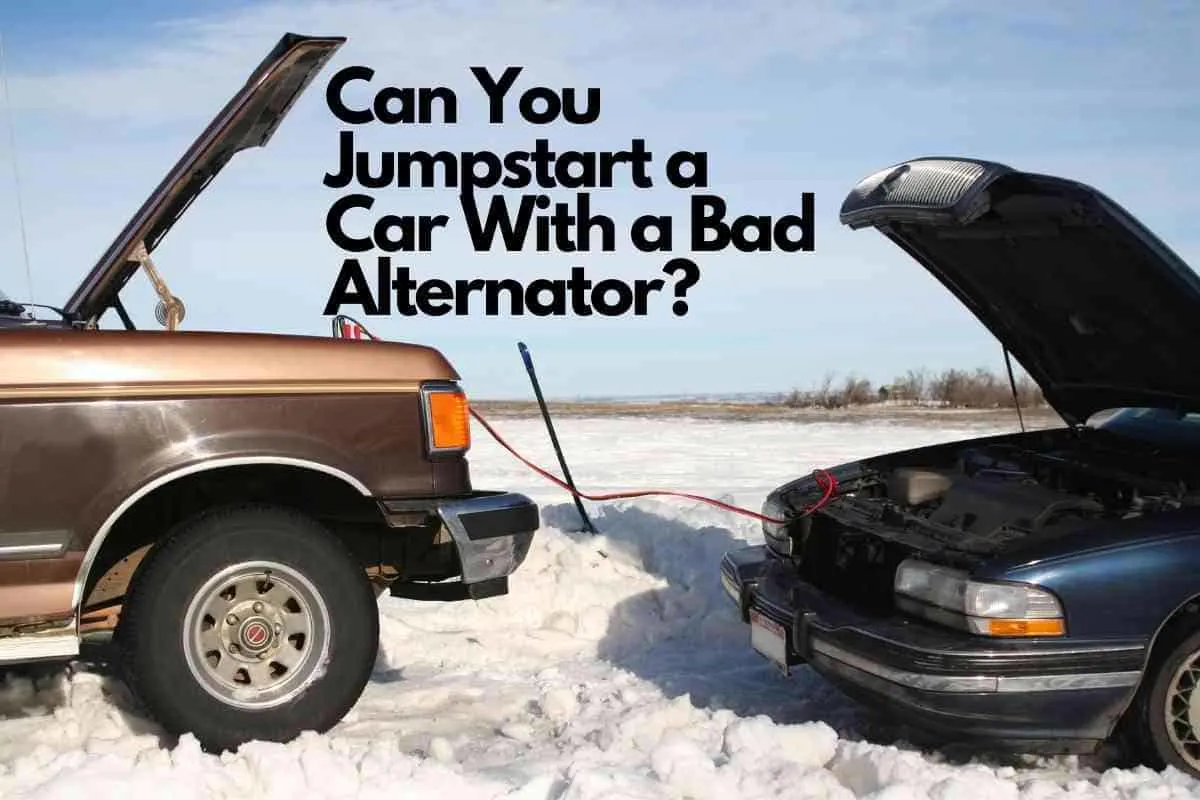We’ve all hopped into our cars, stuck our keys in the ignition, and gave them an expectant turn only to find ourselves missing that familiar sound of our engine cranking up.
Disappointment and frustration set in as you realize that your battery is dead. Or worse, your alternator finally gave way.
Jumping a dead battery is simple enough, but can you jumpstart a car even when the alternator is broken? And if you do….what happens next?
You can jumpstart a car that has a bad alternator but you won’t be able to drive your vehicle more than 5-10 miles without replacing the alternator. You can jumpstart your battery to get your engine started, but since the alternator is what keeps your battery charged, it won’t be able to hold its charge.
Although there are a number of factors that will determine whether your vehicle will jumpstart and will run for a while before dying again.
The alternator is what keeps your car battery charged while driving.
It is also the component that keeps all your fancy electrical gadgets in your car running.
By jumpstarting your vehicle, you are charging the battery.
The battery is never completely dead. But it’s too low to start the engine.
Therefore, if it is charged enough, it can start the engine and acquire enough power to run for a short time.
Without a working alternator, the battery will not be able to keep the charge for long.
A jumpstart will allow the vehicle to run its most important components such as the engine control unit, fuel injectors, fuel pump, etc that the vehicle requires to run.
You will, however, need to get to the mechanic as soon as possible for repairs as it is dangerous to drive a car with a faulty alternator.
How Do You Jump-Start a Car With a Bad Alternator?

The procedure to jumpstart a vehicle with a bad alternator is pretty much the same as that of a normal jumpstart.
However, there are a few quirks that you might need to know before you start.
First, you should know that 3 minutes is enough time to charge a battery with a bad alternator. However, if you intend to drive the vehicle, you will have to charge it for more than 15 minutes.
This is because the battery will drain faster because of the bad alternator as it can’t produce enough voltage to operate the vehicle.
1. Before You Start the Jumpstart
- Ensure that none of the vehicles are in contact with each other
- Take the keys of both cars out of the ignition
- Note the red (positive) and black(negative) wires on your battery
- Ensure that the clamps NEVER touch at any time
- Follow the following steps in order to ensure safety and efficacy

2. Attach Clamps
- Attach the RED clamp to the faulty battery
- Attach the other end of RED clamp to the working battery
- Attach the BLACK clamp to the working battery
- Attach the other end of the BLACK clamp to bare metal (e.g., bolt head, stud, unpainted frame, or nut) to ground the connection.
3. Start Engine
- Start the vehicle’s engine with the working battery
- Allow it to run at 2000rpm for 3 minutes
- If you intend to drive the vehicle with the faulty alternator, then, let it run at 2000rpm for 15 minutes or more
- Run it longer if the engine is colder
- Crank the vehicle with the bad alternator. If that doesn’t work, let it run for another 3 minutes.
4. Remove Clamps
- Remove BLACK clamp from the faulty battery
- Remove RED clamp from the faulty battery
- Remove RED clamp from the working battery
- Remove BLACK clamp from the working battery
5. Turn Off All Electronic Accessories
If your electronic accessories are still running, they are overworking the already faulty alternator.
They are also drawing power from the battery you are trying to charge.
Therefore, all accessories including air conditioning, radio, heating, GPS, CD player, chargers, etc should all be shut down.
This will conserve power for the important components that require the battery’s power.
It’s important to note that jumpstarting a vehicle during the night or in the rain will be futile because windshield wipers and headlights will consume too much of the battery’s power.
6. Take the Vehicle to a Mechanic for Repair
You might not have enough time, so drive slowly to the nearest mechanic.
You should avoid major roads and high traffic streets as your vehicle could shut down without warning.
Get your alternator fixed as soon as possible.
If you have the technical know-how you can probably do it yourself but it’s always advisable to get a trusted mechanic to help you out.
The average cost of a remanufactured alternator ranges from $300-500 inclusive of the part and labor. If you want a new alternator installed, it might set you back between $500-$1,000.
Repairs take less than 2 hours.
Is a Car Drivable With a Bad Alternator?
The alternator can go out suddenly or slowly deteriorate over time. Therefore, there is no clear answer to this question because there are too many factors to consider.
They include:
- The state of your battery – If it is low or dying then the distance you can drive is significantly lower
- The State of the alternator – If its too damaged, the vehicle will only go a short distance before stalling
- The electrical load on your vehicle – Too many electronics in your vehicle will cause a strain on your already faulty alternator
- Your vehicle’s age – A newer model would unlikely go a long distance before stalling. This is because the newer models are more reliant on the battery than the older models.
- Your speed – To preserve your alternator for longer, you might want to drive at a low speed and keep the RPM low.
Once you have jumpstarted your car, it’s important to note that the vehicle can only go for 5-10 minutes or 7-10 miles.
Old vehicles can go up to 25 miles because they have fewer electric components that can drain the battery.
This isn’t a long drive; therefore, you should consider calling a tow truck if the auto repair shop is a long drive from where you are.
Your battery will drain slower during the day than during the night because you are using more battery power.
So, how long will a car battery last if the alternator is not working? Probably 12 hours during the daytime if the problem started recently.
How Do You Tell if It’s Your Alternator or Your Battery?
If you are having trouble starting your car, there could be more than one problem causing the issue.
Starting problems can be caused by corrosion at your cable connection, a faulty starter, a dying battery, or a faulty alternator.
The battery is in charge of supplying electric currents to turn the gears so that the vehicle can start.
The alternator will send electric currents to recharge the battery as the vehicle moves.
Here’s how you can differentiate between a dying battery or a faulty alternator.
1. Corrosion in Battery Terminals
You should check for visible signs of corrosion around your battery’s terminals. If the signs are there then you might want to try and jump-start the vehicle.
If that works, then you might be looking at the culprit.
You might also want to listen for a sluggish clank of your engine.
This is also an indicator that you will need to change the battery.
2. Stalling After Starting the Car
It’s common for a faulty battery to lead to a faulty alternator.
You will know your alternator has a problem:
- If your car stereo system output is acting up and other electrical failures
- Your lights are dimmer than they normally are or are flickering
- Battery indicator light on the dash
- Strange whining or growling noises
- Dead battery
- The smell of burning wires or rubber
Your alternator may be the culprit if your vehicle starts and stalls immediately after. This might happen even after a jumpstart.
This means that your battery is not receiving a recharge because the alternator has a problem.
3. Overheating
Overheating occurs mainly because the alternator is overcharging your car battery.
It’s the alternator’s job to supply a regulated electric voltage to the vehicle’s electronics, including the battery. Overcharging reduces the battery’s life and its reliability.
